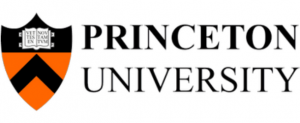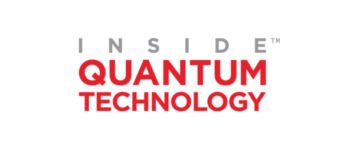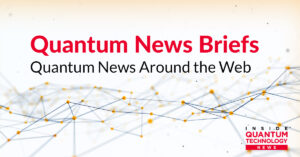
As one of the leading quantum computing companies in the ecosystem, D-Wave Systems, or D-Wave, has once again revealed its technological prowess. In a recent press release, the company’s Advantage system showcased its ability to target the very backbone of our digital age: wireless and cellular networks, by improving their transmission.
A Quantum Solution for a Growing Problem
In today’s rapidly advancing digital age, mobile connectivity is no longer a luxury but a necessity. This is especially true for rural communities that may not have access to cellular service, isolating them from more populated areas.
With the Global System for Mobile Communications Association (GSMA) reporting that the number of global mobile connections is nearing the 12 billion mark, the challenges facing the industry are growing in tandem. One of the most pressing issues is increasing transmission capacity, especially in densely populated urban areas where high noise and load levels challenge traditional systems.
Quantum vs. Traditional Computing in Telecommunications
Dense urban environments are particularly challenging for wireless networks. They often face high levels of noise (low signal-to-noise ratios) and heavy loads (with large numbers of cell phones connecting to each base station).
To assist in overcoming this challenge, D-Wave recently launched a new open-source demonstration of their Advantage annealing quantum computing system. In the demonstration, the system was able to decode wireless and cellular networks to better enhance transmission capacity.
Trevor Lanting, vice president of software, algorithms, and cloud services at D-Wave, expressed his optimism about quantum’s role in the telecommunications industry in a recent press release. “The commercialization of quantum is here,” said Lanting. “In the realm of wireless telecommunications, the complexities and the vast number of variables necessitate immense computational power. Our demonstration emphasizes the superiority of our annealing quantum computing system in addressing these challenges compared to traditional computation.”
Beyond the Advantage of Wireless Decoding: The Quantum Future
The wireless decoding application is just one of many practical uses D-Wave envisions for its quantum and quantum-classical hybrid solutions. Recently, the company announced collaborations with LG U+, the Korea Advanced Institute of Science and Technology (KAIST), and Qunova Computing. Together, they are advancing the development of a 6G low-earth-orbit satellite network, focusing on enhancing ground-to-satellite and inter-satellite connections.
Furthermore, D-Wave’s quantum technologies hold promise for a host of other telecom applications. From employee scheduling and network design to call center routing and service vehicle logistics, quantum computing could revolutionize the telecommunications industry.
As the world becomes increasingly connected, the need for advanced computational solutions grows. With its latest open-source demonstration using Advantage QPU, D-Wave Quantum Inc. showcases its commitment to propelling the telecommunications industry into the quantum future.
Kenna Hughes-Castleberry is a staff writer at Inside Quantum Technology and the Science Communicator at JILA (a partnership between the University of Colorado Boulder and NIST). Her writing beats include deep tech, quantum computing, and AI. Her work has been featured in Scientific American, New Scientist, Discover Magazine, Ars Technica, and more.
- SEO Powered Content & PR Distribution. Get Amplified Today.
- PlatoData.Network Vertical Generative Ai. Empower Yourself. Access Here.
- PlatoAiStream. Web3 Intelligence. Knowledge Amplified. Access Here.
- PlatoESG. Carbon, CleanTech, Energy, Environment, Solar, Waste Management. Access Here.
- PlatoHealth. Biotech and Clinical Trials Intelligence. Access Here.
- Source: https://www.insidequantumtechnology.com/news-archive/d-waves-advantage-qpu-shows-improvement-in-cellphone-network-transmission-2/
- :has
- :is
- :not
- :where
- 12
- 2023
- 23
- 6G
- 7
- a
- ability
- Able
- About
- access
- addressing
- advanced
- advancing
- ADvantage
- again
- age
- AI
- algorithms
- American
- amp
- and
- announced
- Application
- applications
- ARE
- areas
- assist
- Association
- At
- Backbone
- base
- becomes
- been
- Better
- between
- Billion
- Bloomberg
- busy
- but
- by
- call
- call center
- Capacity
- cell phones
- Center
- challenge
- challenges
- challenging
- Cloud
- cloud services
- collaborations
- Colorado
- commercialization
- commitment
- Communications
- Communities
- Companies
- company
- Company’s
- compared
- complexities
- computation
- computational
- computational power
- computing
- connected
- Connecting
- Connections
- Connectivity
- could
- D-Wave
- D-Wave Quantum
- Decoding
- deep
- Design
- Development
- digital
- digital age
- discover
- each
- ecosystem
- emphasizes
- Employee
- enhance
- enhancing
- environments
- envisions
- especially
- expressed
- Face
- facing
- featured
- focusing
- For
- from
- future
- gives
- Global
- Growing
- Grows
- Have
- heavy
- her
- here
- High
- his
- hold
- host
- HTTPS
- Hybrid
- image
- immense
- improvement
- improving
- in
- Inc.
- include
- increasing
- increasingly
- industry
- inside
- Inside Quantum Technology
- Institute
- into
- issues
- ITS
- just
- just one
- korea
- large
- latest
- launched
- leading
- levels
- load
- loads
- logistics
- longer
- Low
- Luxury
- magazine
- many
- mark
- max-width
- May..
- Mobile
- more
- most
- nearing
- necessity
- Need
- network
- networks
- New
- nist
- no
- Noise
- number
- numbers
- Oct
- of
- often
- on
- once
- ONE
- open source
- Optimism
- or
- Other
- our
- overcoming
- particularly
- Partnership
- phones
- plato
- Plato Data Intelligence
- PlatoData
- populated
- posted
- power
- Practical
- president
- press
- Press Release
- pressing
- promise
- propelling
- prowess
- Quantum
- quantum computing
- quantum technology
- rapidly
- realm
- recent
- recently
- release
- Reporting
- Revealed
- revolutionize
- Role
- routing
- Rural
- s
- Said
- satellite
- scheduling
- Science
- Science and Technology
- scientific
- Scientist
- service
- Services
- showcased
- Shows
- Software
- solution
- Solutions
- Staff
- staff writer
- station
- system
- Systems
- Tandem
- Target
- tech
- technological
- Technologies
- Technology
- telecom
- telecommunications
- that
- The
- the world
- their
- Them
- These
- they
- this
- to
- today’s
- together
- traditional
- true
- university
- urban
- uses
- using
- Vast
- vehicle
- very
- vice
- Vice President
- vs
- was
- wireless
- with
- Work
- world
- writer
- writing
- zephyrnet












